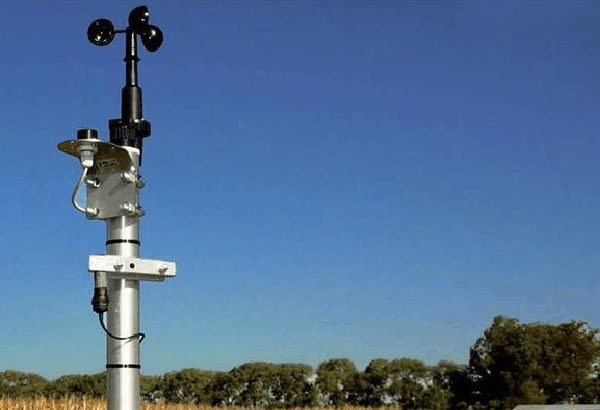There are two types of rotating anemometer: the cup anemometer, which has three or four cup wheels attached to the rotating axis, and the propeller anemometer, which has propeller blades. Both types rely on the principle that the revolution speed of the cup or propeller rotor is proportional to the wind speed.
Rotating anemometers can be classified as the generator type or the pulse generator type according to the type of signal generator used. The generator type is a kind of wind power generator whose cup or propeller axis is directly coupled to the axis of a generator that generates voltage from their rotation. As the generated voltage is proportional to the revolution speed of the cup or propeller rotor and thus to the wind speed, the wind speed can be measured. The two types of generator are the AC (alternating current) and the DC (direct current) kinds. As a DC generator requires a commutator (i.e., a collector and brushes) and has a more complicated structure than an AC generator, the AC generator type is widely used.

Rotating anemometers with a pulse generator come in several different types, including one that generates electrical pulse signals using an electrical contact-breaker and one that generates optical pulses using an optical light-chopper converter. The latter consists of a light-emitting diode, a perforated disk fixed to the axis of the rotation sensor and a phototransistor. The number of pulses, which is proportional to the number of anemometer revolutions (and thus to the wind speed) is counted to ascertain the wind speed.
These wind speed sensors measure instantaneous wind speed. The average wind speed is obtained using either the pulse-of-wind-passage method or with a CR integrated circuit (a combination of capacitors and resistors), or alternatively with a microprocessor.
